Header/Sender ID Registration At Vodafone VILPower DLT
Header ID is an unavoidable part of DLT registration. Different DLT operators have different processes for Header registration. In this article, we will be discussing Header/Sender ID Registration At Vodafone VILPower DLT.
Header/Sender ID Registration At Vodafone VILPower DLT
1. Login to Vodafone VILPower DLT.
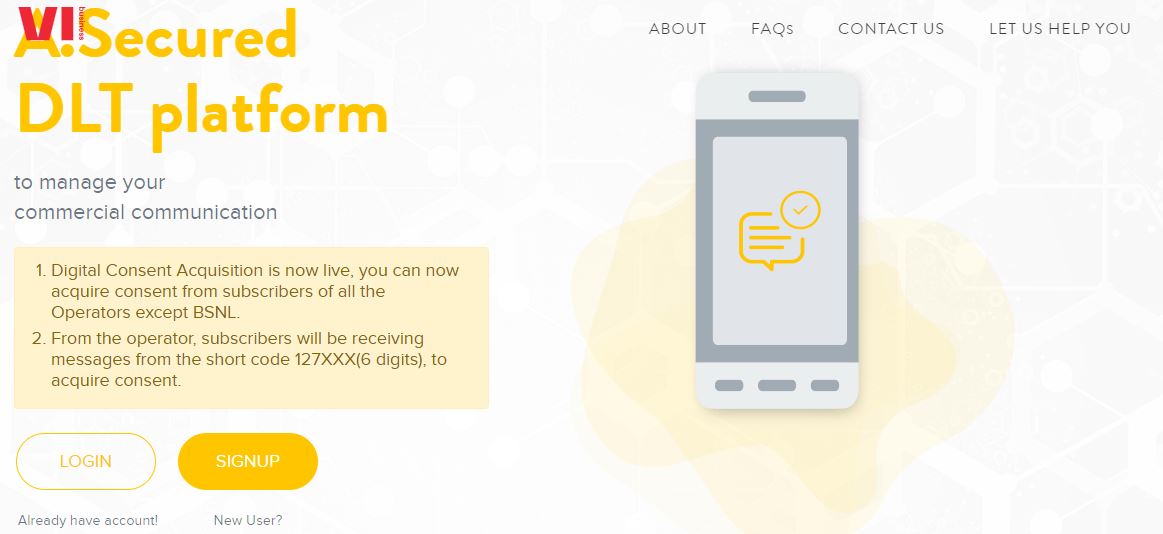
2. Click on the Headers tab and click +Add
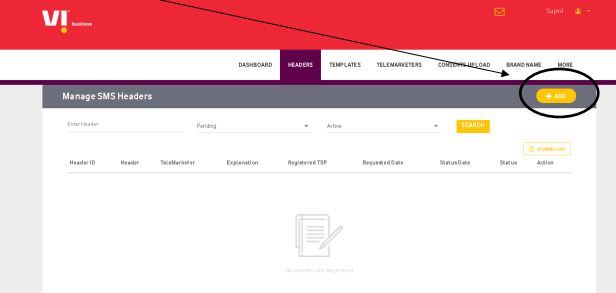
3. Choose the type of Header from promotional or transactional
4. Select the category from the dropdown depending on the type of header
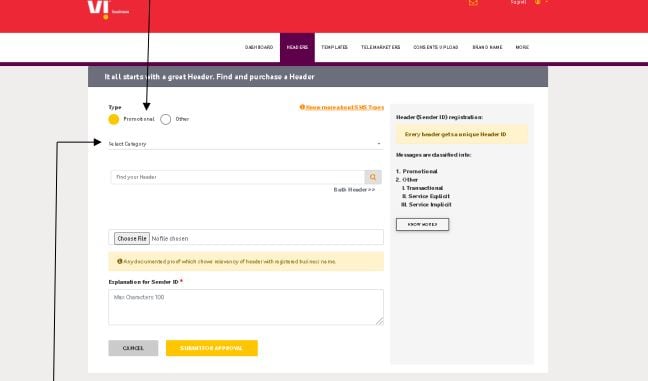
5. Create a Header name according to the category. For promotional Header should be numeric and for Service implicit and explicit headers can be 6 alphabets.

6. Upload a document to justify the header such as a trade trademark certificate with a description.
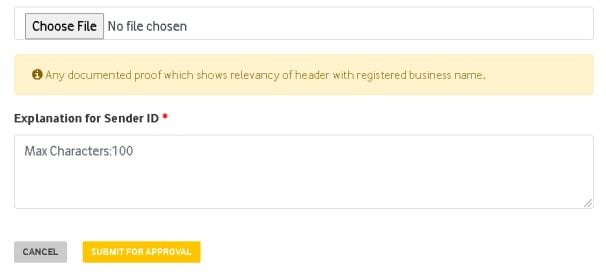
7. Click “Submit”
8. After entering all the required fields, the Registrar will validate the header along with the document attached and the explanation mentioned to justify the header.
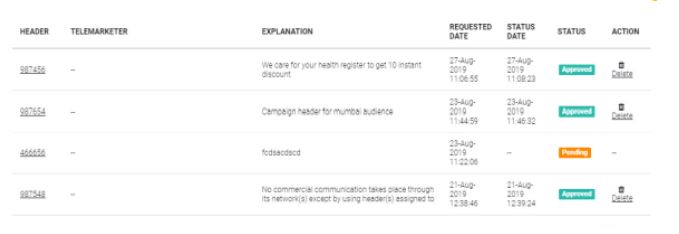
The header will be rejected if the provided justification fails to show the relevance of the header and principal entity.
Types of Header for Bulk SMS communication
There are 3 types of categories for Bulk SMS Headers: promotional, service implicit, and service explicit. Let’s see the difference among the three.
1. Promotional Header
These headers are used for promotional or marketing bulk SMS campaigns. Since it’s promotional the SMS will only be delivered at non-DND numbers. Commercial or promotional headers are 6 numeric only. For example 787878, 232323, ETC.
2. Service Implicit
Messages arising out of the customer’s actions or his relationship with the Sender, that are not promotional, and are not in the interest of the customer to block such communications. These messages are sent by 6 alphabet headers only. Example ABABAB, MNMNMN, etc.
3. Service Explicit
Any service message that doesn’t fall under the category of service message (Implicit) will be sent only against service explicit. Example, klklk, cvcvcv, etc.
Only Government headers can be used for sending transactional, service implicit, and explicit messages with 3 to 9-digit header IDs.

